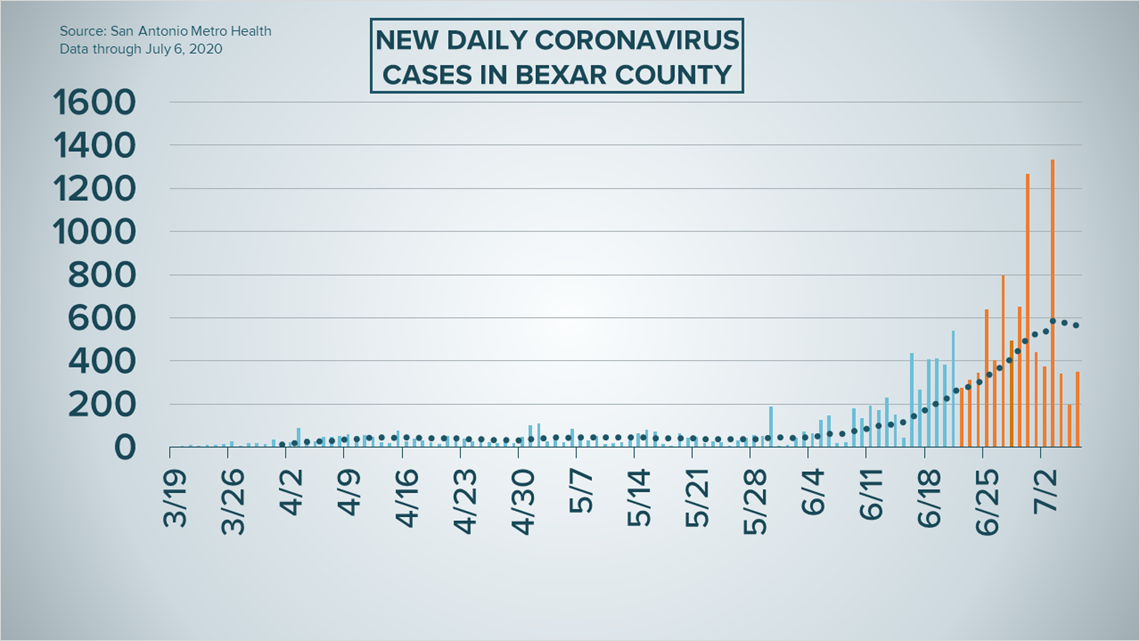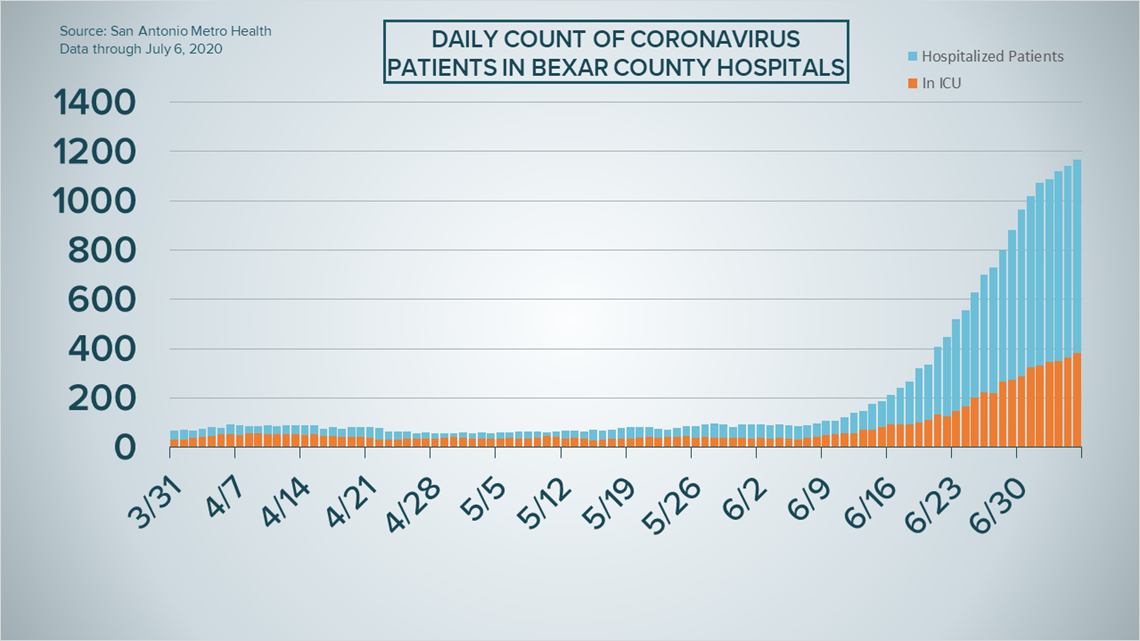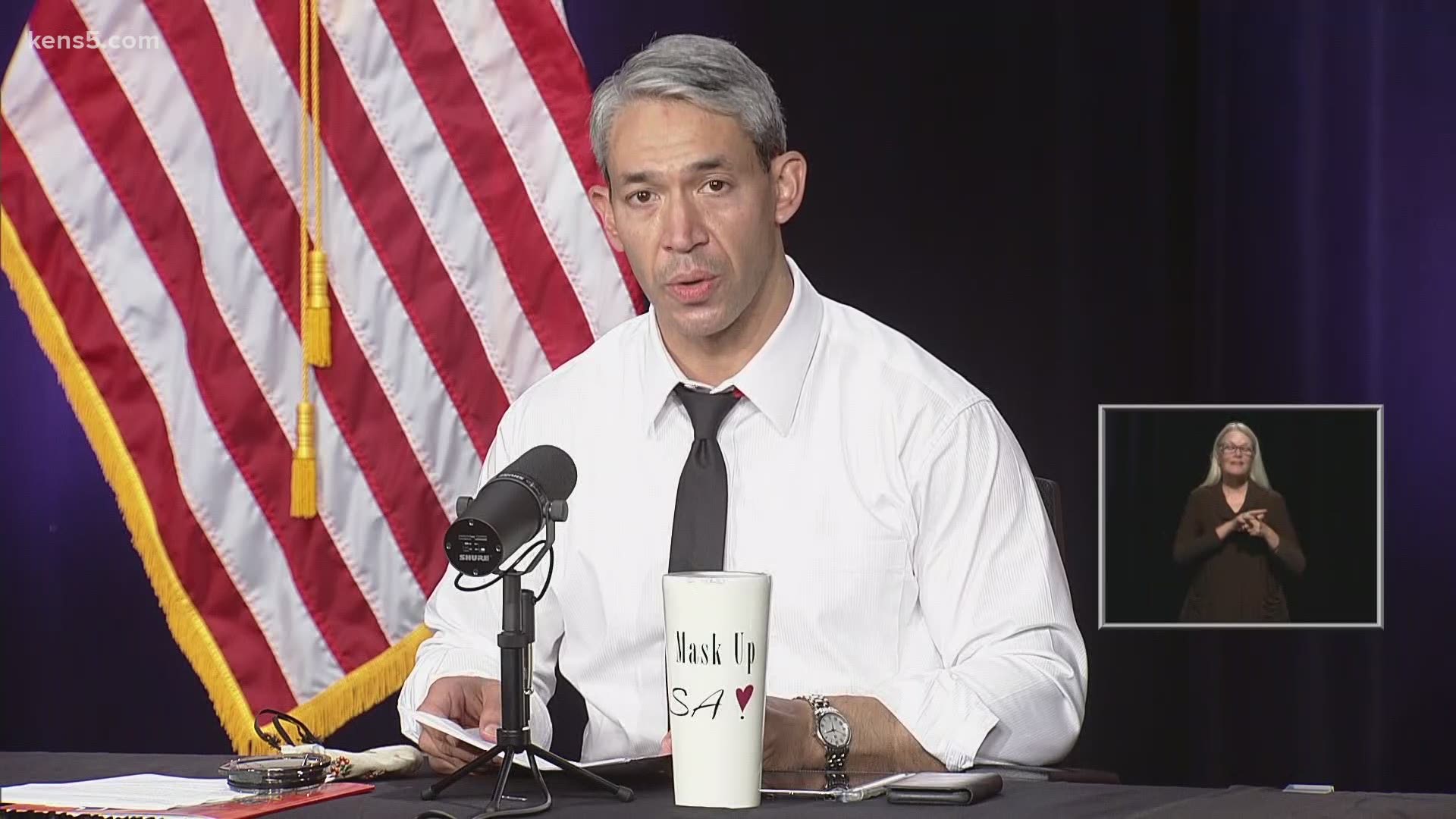SAN ANTONIO — We're tracking the latest numbers from the coronavirus pandemic in San Antonio and across Texas. Here are the latest numbers reported by Bexar and surrounding counties:
- Bexar County: 351 new cases and 2 more deaths from COVID-19 were reported Monday. There is now a total of 15,102 cases and 132 fatalities in the county.
- Comal County: Comal County has not reported new numbers since July 3. The county reported 71 new coronavirus cases and one fatality Friday. Nine people have now died in the county, while 301 have recovered. The positivity rate has risen to 12.67%, the highest the county has recorded since the pandemic began. As of Friday, there is a total of 907 confirmed and probable coronavirus cases in Comal County.
- Hays County: The county reported 77 new coronavirus cases and three fatalities Monday, As of July 6, the Hays County Local Health Department confirms there are at least 2,655 active lab-confirmed cases of COVID-19. Since Hays County first started providing numbers, a total of 3,193 lab-confirmed cases have been reported, including 10 deaths.
Bexar County reports the full numbers daily at 7 p.m.
How Bexar County is trending:
We're tracking how many coronavirus cases are confirmed in Bexar County each day from the time San Antonio Metro Health began reporting cases more than two months ago. Graphing those daily case numbers along a 14-day moving average provides an accurate picture of the curve in the San Antonio area and the direction we're heading amid the coronavirus.


On Monday evening, Mayor Ron Nirenberg reported 351 newly confirmed cases of the novel coronavirus. The total number of cases in Bexar County during the pandemic is now 15,102.
The number of local COVID-19-positive patients currently in area hospitals, meanwhile, rose to 1,168. 382 patients are in intensive care, and 213 are on ventilators.


Bexar County reported two new fatalities Monday; since July 1, 22 residents have died from coronavirus, marking the deadliest stretch of the pandemic for the San Antonio area.
Local leaders pointed to a few positive trends Monday, including a deceleration in new cases.
Bexar County has also raised its testing capability to 7,000 tests per day.
Coronavirus in Texas
State health officials reported an all-time high count of 5,318 new coronavirus cases on Sunday, bringing the total to 200,557.
Meanwhile, an additional 18 COVID-19 deaths were reported by the state on Monday, raising the death toll to 2,655.


Hospitalizations statewide increased by 517 in the past 24 hours. There are currently 8,698 Texans in the hospital with coronavirus. The state estimates that 94,120 residents are actively battling the virus, while 103,782 residents have recovered.
Texas has now passed Germany for the total number of coronavirus cases since the beginning of the global pandemic.
Latest Coronavirus Headlines
- Medical experts make coronavirus risk chart, ranking day to day activities
- 239 scientists: Coronavirus can spread through air; urge WHO to acknowledge
- McConnell: Second stimulus package should focus on schools, health care
- 'We need you more than ever' | San Antonio Food Bank asking for volunteers
- Padre Island National Seashore now offering digital entrance passes
- White House again rejects national strategy on masks
Coronavirus symptoms
The symptoms of coronavirus can be similar to the flu or a bad cold. Symptoms include fever or chills, cough, shortness of breath or difficulty breathing, fatigue, muscle or body aches, headache, new loss of taste or smell sore throat, congestion or runny nose, nausea or vomiting and diarrhea, according to the Centers for Disease Control.
Most healthy people will have mild symptoms. A study of more than 72,000 patients by the Centers for Disease Control in China showed 80 percent of the cases there were mild.
But infections can cause pneumonia, severe acute respiratory syndrome, kidney failure, and even death, according to the World Health Organization. Older people with underlying health conditions are most at risk.
On June 25, the CDC expanded the list of groups at a higher risk of severe illness due to coronavirus.
Experts determined there was consistent evidence these conditions increase a person's risk, regardless of age:
- Chronic kidney disease
- COPD (chronic obstructive pulmonary disease)
- Obesity (BMI of 30 or higher)
- Immunocompromised state (weakened immune system) from solid organ transplant
- Serious heart conditions, such as heart failure, coronary artery disease, or cardiomyopathies
- Sickle cell disease
- Type 2 diabetes
The CDC believes symptoms may appear anywhere from two to 14 days after being exposed.
Human coronaviruses are usually spread...
- Between people who are in close contact with one another (within about 6 feet).
- Through respiratory droplets produced when an infected person coughs, sneezes or talks. These droplets can land in the mouths or noses of people who are nearby or possibly be inhaled into the lungs.
- Some recent studies have suggested that COVID-19 may be spread by people who are not showing symptoms.
Help stop the spread of coronavirus
- Stay home when you are sick.
- Eat and sleep separately from your family members
- Use different utensils and dishes
- Cover your cough or sneeze with your arm, not your hand.
- If you use a tissue, throw it in the trash.
Lower your risk
- Wash your hands often with soap and water for at least 20 seconds. If soap and water are not available, use an alcohol-based hand sanitizer.
- Avoid touching your eyes, nose, and mouth with unwashed hands.
- Avoid close contact with people who are sick.
- Clean and disinfect frequently touched objects and surfaces.
- The CDC recommends wearing a mask or cloth face covering if you have to be out due to an essential service or essential activity such as going to the grocery store.
- If you are 60 or over and have an underlying health condition such as cardiovascular disease, diabetes or respiratory illnesses like asthma or COPD, the World Health Organization advises you to try to avoid crowds or places where you might interact with people who are sick.

